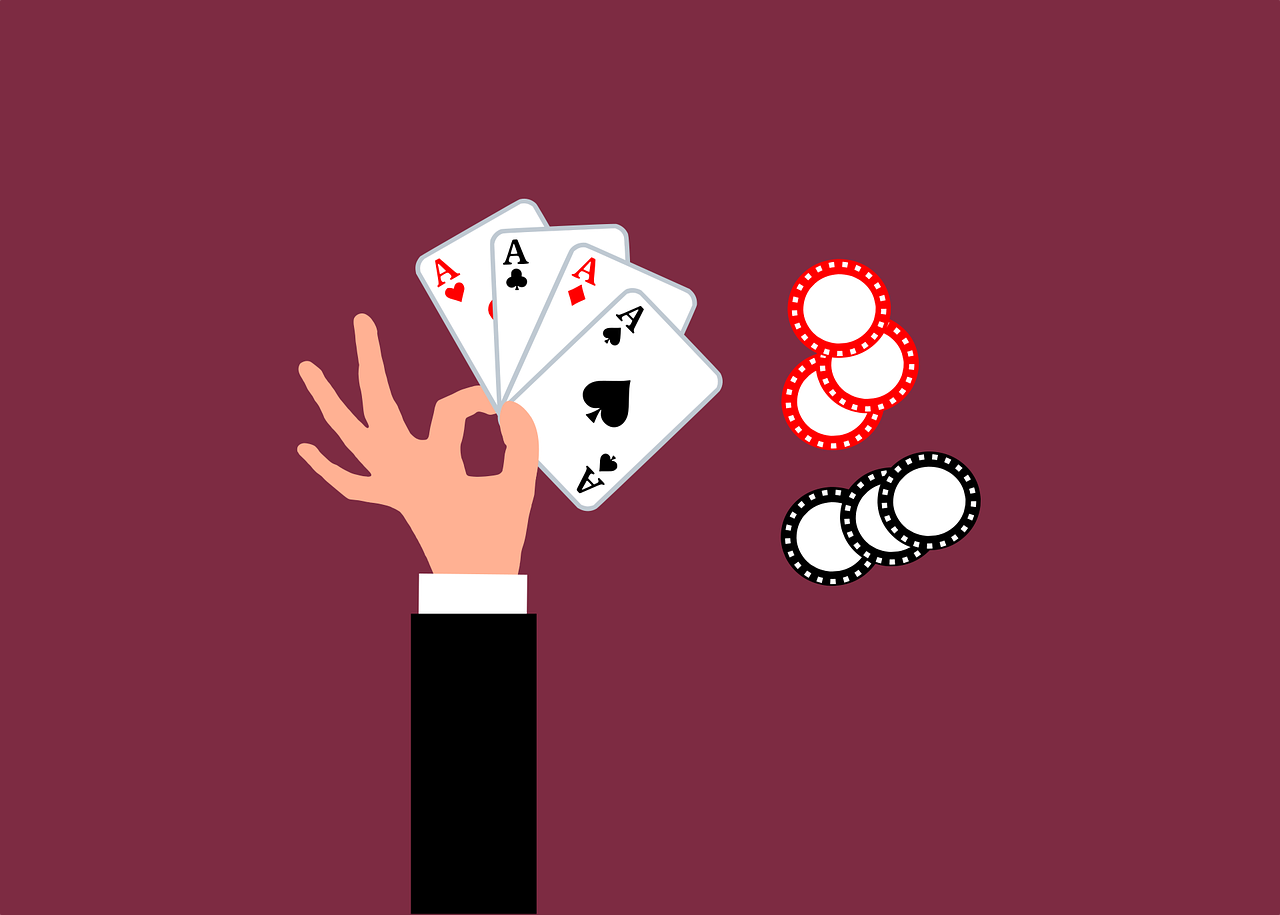“Mastering the Poker Deck: Unveiling the 52-Card Arsenal for Unstoppable Wins at the Poker Table” is a comprehensive guide that delves into the intricacies of poker and provides valuable insights on how to maximize your chances of winning. This book explores the 52-card deck, unraveling its secrets and equipping players with the knowledge and strategies needed to dominate the poker table. Whether you are a beginner looking to grasp the fundamentals or an experienced player seeking to enhance your skills, this book offers a wealth of information and techniques to help you achieve unstoppable wins in the thrilling game of poker.
The History and Evolution of the Poker Deck: From Ancient Origins to Modern-Day Mastery
Poker is a game that has captivated players for centuries, and at the heart of this game lies the poker deck. The deck of cards used in poker is a powerful tool that can make or break a player’s chances of winning. Understanding the history and evolution of the poker deck is essential for any aspiring poker player looking to master the game.
The origins of the poker deck can be traced back to ancient China, where playing cards were first invented. These early cards were made of paper and featured various suits and numbers. As the game spread across Asia and into the Middle East, different variations of the deck began to emerge. It wasn’t until the 14th century that playing cards made their way to Europe, where they would eventually evolve into the modern poker deck.
The modern poker deck consists of 52 cards, divided into four suits: hearts, diamonds, clubs, and spades. Each suit contains thirteen cards, ranging from the Ace to the King. This standard deck has become the foundation for countless variations of poker played around the world.
The evolution of the poker deck can be seen in the design and symbolism of the cards. In the early days, playing cards were often hand-painted, with intricate designs and symbols. As printing technology advanced, mass-produced decks became more common, featuring standardized designs that are still used today.
One of the most iconic features of the poker deck is the court cards. These cards, which include the King, Queen, and Jack, are often adorned with elaborate illustrations and symbols. The court cards have evolved over time, reflecting the changing tastes and styles of different eras. From the elegant and regal designs of the Renaissance to the more modern and minimalist interpretations of today, the court cards are a visual representation of the history of the poker deck.
Another important aspect of the poker deck is the joker. Originally introduced as a wild card in the game of Euchre, the joker has become a staple in many variations of poker. The joker is often depicted as a jester or clown, adding a touch of whimsy to the deck. While not always used in every game, the joker is a versatile card that can greatly impact the outcome of a hand.
As poker has evolved, so too has the deck. In recent years, custom-designed decks have become popular among poker enthusiasts. These decks often feature unique artwork and designs, adding a personal touch to the game. From intricate illustrations to bold and vibrant colors, these custom decks are a testament to the creativity and passion of the poker community.
In conclusion, the poker deck is a powerful tool that has evolved over centuries. From its ancient origins in China to the modern-day mastery of the game, the poker deck has played a crucial role in the history of poker. Understanding the history and evolution of the deck is essential for any player looking to master the game. So, the next time you sit down at the poker table, take a moment to appreciate the rich history and symbolism of the 52-card arsenal in your hands.
Understanding the Anatomy of a Poker Deck: Exploring the Different Suits and Ranks
A standard poker deck consists of four suits: hearts, diamonds, clubs, and spades. Each suit is represented by a unique symbol and color, making it easy to distinguish between them. The suits have no inherent value in poker, but they play a crucial role in determining the strength of a hand.
Within each suit, there are thirteen ranks, ranging from Ace to King. The Ace is the highest-ranking card, followed by King, Queen, Jack, and then the numbered cards from 10 to 2. The Ace can also be used as a low card in certain poker variations, such as in a straight where it is considered the lowest card.
Understanding the ranks is essential for evaluating the strength of your hand. A hand with a high-ranking card, such as an Ace or King, is generally considered stronger than a hand with lower-ranking cards. However, it is important to note that the value of a hand is not solely determined by the ranks of the cards, but also by their combination and potential for improvement.
In poker, the goal is to create the best possible hand using a combination of cards from your own hand and the community cards on the table. The suits and ranks of the cards in your hand will influence the potential strength of your hand. For example, if you have two cards of the same suit, you have the potential to make a flush, which is a strong hand in poker.
Transitional phrase: Moving on to the next point, it is important to note that the ranks of the cards can also affect the probability of certain hands. For instance, the presence of high-ranking cards in the deck reduces the likelihood of making a straight or a flush, as these hands require a specific sequence or suit of cards.
Furthermore, the ranks of the cards can also impact the strategy and decision-making process during a poker game. For example, if you have a pair of Aces, you have a strong starting hand and may choose to play aggressively. On the other hand, if you have a low-ranking hand, such as a pair of twos, you may opt for a more cautious approach.
In conclusion, understanding the anatomy of a poker deck is crucial for mastering the game. The suits and ranks of the cards determine the strength of your hand and influence your decision-making process. By familiarizing yourself with the different suits and ranks, you can gain a competitive edge at the poker table. So, next time you sit down to play a game of poker, remember to pay attention to the 52-card arsenal in front of you, and use it to your advantage for unstoppable wins.
Essential Strategies for Mastering the Poker Deck: Tips and Tricks for Maximizing Your Winning Potential
First and foremost, it is crucial to understand the different suits in a standard deck of cards. The four suits – hearts, diamonds, clubs, and spades – each have their own significance in the game. Hearts and diamonds are considered “red” suits, while clubs and spades are known as “black” suits. This distinction may seem trivial, but it can play a role in certain strategies and betting patterns.
Within each suit, there are thirteen ranks, ranging from Ace to King. The Ace is the highest-ranking card, followed by King, Queen, Jack, and so on. Understanding the hierarchy of the ranks is essential for making informed decisions during gameplay. For example, holding a pair of Aces is considered a strong starting hand, while a pair of twos may not hold as much value.
In addition to the ranks, each card also has a numerical value. The numbered cards, from two to ten, hold their face value. For example, a two of hearts is worth two points, while a ten of spades is worth ten points. This numerical value can be useful when calculating the strength of your hand and determining your betting strategy.
Furthermore, the face cards – King, Queen, and Jack – are each worth ten points. These cards can be valuable in certain situations, as they have a higher likelihood of completing a strong hand. However, it is important to remember that they do not hold the same value as an Ace, which can be used as a high or low card depending on the context.
Understanding the value and potential of each card is only the first step in mastering the poker deck. The next crucial aspect is knowing how to combine and utilize these cards to maximize your winning potential. This is where strategy and skill come into play.
One popular strategy is to focus on starting hands that have the potential to form strong combinations. For example, holding two cards of the same rank, such as a pair of sevens, can be a promising starting hand. This gives you the opportunity to form a three-of-a-kind or a full house, both of which are strong hands in poker.
Another important strategy is to pay attention to the community cards that are revealed during the game. These cards are shared by all players and can greatly impact the strength of your hand. By carefully analyzing the community cards and considering how they complement your own cards, you can make informed decisions about your betting and playing strategy.
In conclusion, mastering the poker deck is a crucial step towards becoming a skilled and successful poker player. Understanding the value and potential of each card, as well as how to combine and utilize them effectively, can give you a significant advantage at the poker table. By employing these essential strategies, you can maximize your winning potential and become unstoppable in the game of poker.
Unleashing the Power of Card Combinations: How to Create Winning Hands with the Poker Deck
The game of poker is a battle of wits, strategy, and skill. To emerge victorious at the poker table, players must not only possess a keen understanding of the game’s rules and mechanics but also master the art of creating winning hands with the poker deck. The 52-card arsenal holds the key to unlocking unstoppable wins, and in this section, we will delve into the power of card combinations and how to harness them to your advantage.
At the heart of every successful poker hand lies a carefully crafted combination of cards. These combinations, known as poker hands, are ranked in a specific order, with the highest-ranking hand being the most desirable. Understanding the hierarchy of poker hands is crucial for any aspiring poker player, as it allows them to gauge the strength of their hand and make informed decisions during gameplay.
The most coveted hand in poker is the Royal Flush, consisting of the Ace, King, Queen, Jack, and Ten of the same suit. This unbeatable combination is a rare gem, and players who manage to land a Royal Flush are almost guaranteed a win. However, the chances of obtaining this hand are slim, and it is essential to familiarize oneself with other, more common, yet still formidable combinations.
The next best hand is the Straight Flush, which comprises five consecutive cards of the same suit. This hand is a force to be reckoned with, as it combines the strength of both a straight and a flush. A Straight Flush can vary in value depending on the highest card in the sequence, with the Ace being the highest and the Five being the lowest.
Following the Straight Flush is the Four of a Kind, a combination of four cards of the same rank, accompanied by any fifth card. This hand is a potent weapon, capable of overpowering most other combinations. The value of a Four of a Kind is determined by the rank of the four matching cards, with higher ranks trumping lower ones.
Moving down the hierarchy, we encounter the Full House, a combination of three cards of the same rank and a pair of another rank. This hand is a formidable contender, as it combines the strength of both Three of a Kind and a Pair. The value of a Full House is determined by the rank of the three matching cards, with higher ranks prevailing over lower ones.
Next in line is the Flush, a combination of any five cards of the same suit, not in sequential order. While not as powerful as the previous hands, a Flush can still pack a punch, especially if the cards are of high rank. In the event of a tie, the highest-ranking card in the Flush determines the winner.
The Straight, a combination of five consecutive cards of any suit, follows the Flush. This hand is relatively common and can be a valuable asset if played strategically. As with the Straight Flush, the value of a Straight is determined by the highest card in the sequence.
Lastly, we have the Three of a Kind, a combination of three cards of the same rank, accompanied by any two unrelated cards. While not as strong as the previous hands, a Three of a Kind can still be a formidable force, especially if the matching cards are of high rank.
Mastering the art of creating winning hands with the poker deck is a skill that takes time and practice to develop. By familiarizing oneself with the various combinations and their rankings, players can make informed decisions and increase their chances of emerging victorious at the poker table. So, next time you sit down to play a game of poker, remember the power that lies within the 52-card arsenal and unleash it to secure unstoppable wins.
Advanced Techniques for Reading the Poker Deck: Mastering the Art of Bluffing and Spotting Tells
Bluffing is an essential skill in poker, allowing players to deceive their opponents and win pots they might not otherwise have won. However, bluffing is not a simple task. It requires a deep understanding of the poker deck and the ability to read the cards on the table. One must be able to assess the likelihood of their opponents holding certain cards and use that information to their advantage.
One technique for bluffing effectively is to carefully observe the cards on the table and consider how they might affect the hands of your opponents. For example, if the flop consists of three low cards, it is less likely that any player has a strong hand. This presents an opportunity to bluff, as your opponents may be more inclined to fold if they believe their hands are weak in comparison.
Another important aspect of bluffing is the ability to spot tells. Tells are subtle physical or verbal cues that can give away a player’s hand. They can be as simple as a nervous twitch or a change in breathing pattern. By paying close attention to your opponents’ behavior, you can gain valuable insights into the strength of their hands.
Spotting tells requires a keen eye and a deep understanding of human psychology. It is important to note that not all tells are reliable indicators of a player’s hand. Some players may intentionally give false tells to deceive their opponents. Therefore, it is crucial to consider multiple factors when assessing the strength of your opponents’ hands.
In addition to bluffing and spotting tells, understanding the probabilities associated with the poker deck is crucial for success at the poker table. Knowing the likelihood of certain hands can help you make informed decisions and maximize your chances of winning.
For example, understanding the odds of hitting a flush or a straight can help you determine whether it is worth continuing to bet or fold. By calculating the probabilities and comparing them to the size of the pot, you can make strategic decisions that give you an edge over your opponents.
Furthermore, understanding the distribution of cards in the poker deck can help you assess the likelihood of your opponents holding certain hands. For instance, if you hold two aces, the probability of another player having a pair of aces is significantly reduced. This knowledge can inform your betting strategy and help you make more accurate reads on your opponents’ hands.
In conclusion, mastering the art of bluffing and spotting tells is essential for success at the poker table. By carefully observing the cards on the table, assessing the likelihood of your opponents’ hands, and paying attention to their behavior, you can gain valuable insights that give you an edge in the game. Additionally, understanding the probabilities associated with the poker deck can help you make informed decisions and maximize your chances of winning. With these advanced techniques, you can unlock the full potential of the 52-card arsenal and achieve unstoppable wins at the poker table. “Mastering the Poker Deck: Unveiling the 52-Card Arsenal for Unstoppable Wins at the Poker Table” is a comprehensive guide that aims to help players enhance their poker skills and increase their chances of winning. By providing insights into the strategies, techniques, and psychology behind the game, this book equips players with the necessary knowledge to navigate the complexities of poker and achieve consistent success at the poker table.




